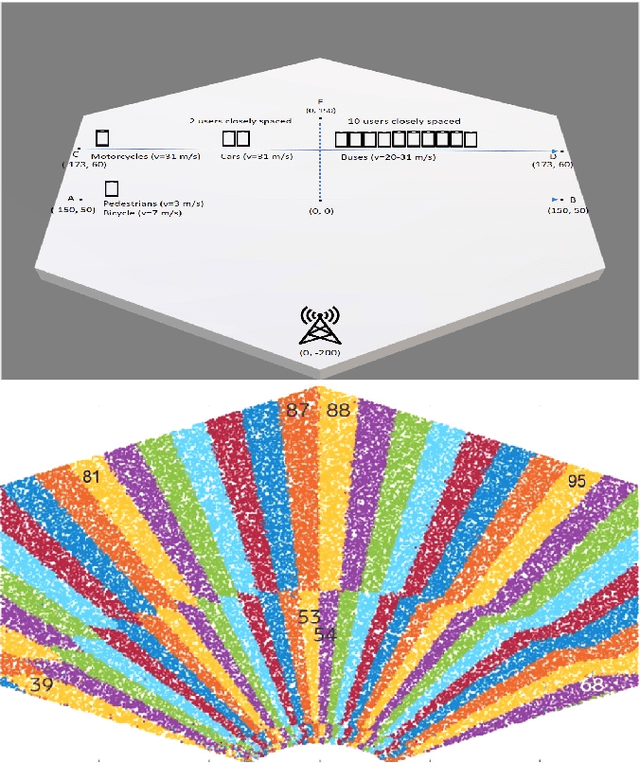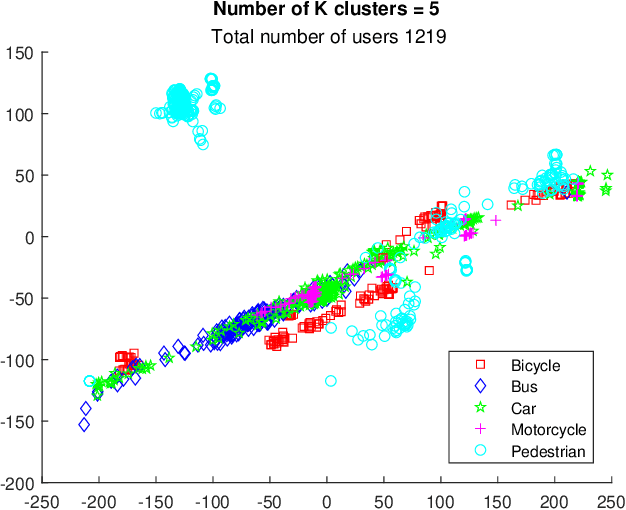Andres Reial
Early-Scheduled Handover Preparation in 5G NR Millimeter-Wave Systems
Nov 14, 2024



Abstract:The handover (HO) procedure is one of the most critical functions in a cellular network driven by measurements of the user channel of the serving and neighboring cells. The success rate of the entire HO procedure is significantly affected by the preparation stage. As massive Multiple-Input Multiple-Output (MIMO) systems with large antenna arrays allow resolving finer details of channel behavior, we investigate how machine learning can be applied to time series data of beam measurements in the Fifth Generation (5G) New Radio (NR) system to improve the HO procedure. This paper introduces the Early-Scheduled Handover Preparation scheme designed to enhance the robustness and efficiency of the HO procedure, particularly in scenarios involving high mobility and dense small cell deployments. Early-Scheduled Handover Preparation focuses on optimizing the timing of the HO preparation phase by leveraging machine learning techniques to predict the earliest possible trigger points for HO events. We identify a new early trigger for HO preparation and demonstrate how it can beneficially reduce the required time for HO execution reducing channel quality degradation. These insights enable a new HO preparation scheme that offers a novel, user-aware, and proactive HO decision making in MIMO scenarios incorporating mobility.
Distributed MIMO Precoding with Routing Constraints in Segmented Fronthaul
May 30, 2024



Abstract:Distributed Multiple-Input and Multiple-Output (D-MIMO) is envisioned to play a significant role in future wireless communication systems as an effective means to improve coverage and capacity. In this paper, we have studied the impact of a practical two-level data routing scheme on radio performance in a downlink D-MIMO scenario with segmented fronthaul. At the first level, a Distributed Unit (DU) is connected to the Aggregating Radio Units (ARUs) that behave as cluster heads for the selected serving RU groups. At the second level, the selected ARUs connect with the additional serving RUs. At each route discovery level, RUs and/or ARUs share information with each other. The aim of the proposed framework is to efficiently select serving RUs and ARUs so that the practical data routing impact for each User Equipment (UE) connection is minimal. The resulting post-routing Signal-to-Interference plus Noise Ratio (SINR) among all UEs is analyzed after the routing constraints have been applied. The results show that limited fronthaul segment capacity causes connection failures with the serving RUs of individual UEs, especially when long routing path lengths are required. Depending on whether the failures occur at the first or the second routing level, a UE may be dropped or its SINR may be reduced. To minimize the DU-ARU connection failures, the segment capacity of the segments closest to the DU is set as double as the remaining segments. When the number of active co-scheduled UEs is kept low enough, practical segment capacities suffice to achieve a zero UE dropping rate. Besides, the proper choice of maximum path length setting should take into account segment capacity and its utilization due to the relation between the two.
* This is the accepted version of a paper published in 2023 IEEE 34th Annual International Symposium on Personal, Indoor and Mobile Radio Communications (PIMRC). The final version is available at https://ieeexplore.ieee.org/document/10293781
Alamouti-Like Transmission Schemes in Distributed MIMO Networks
Feb 08, 2023Abstract:The purpose of the study is to investigate potential benefits of using Alamouti-like orthogonal space-time-frequency block codes (STFBC) in distributed multiple-input multiple-output (D-MIMO) systems to increase the diversity at the UE side when instantaneous channel state information (CSI) is not available at radio units (RUs). Most of the existing transmission techniques require instantaneous CSI to form precoders which can only be realized together with accurate and up-to-date channel knowledge. STFBC can increase the diversity at UE side without estimating the downlink channel. Under challenging channel conditions, the network can switch to a robust mode where a certain data rate is maintained for users even without knowing the channel coefficients by means of STFBC. In this study, it will be mainly focused on clustering of RUs and user equipment, where each cluster adopts a possibly different orthogonal code, so that overall spectral efficiency is optimized. Potential performance gains over known techniques that can be used when the channel is not known will be shown and performance gaps to sophisticated precoders making use of channel estimates will be identified.
Learning-Based UE Classification in Millimeter-Wave Cellular Systems With Mobility
Sep 13, 2021



Abstract:Millimeter-wave cellular communication requires beamforming procedures that enable alignment of the transmitter and receiver beams as the user equipment (UE) moves. For efficient beam tracking it is advantageous to classify users according to their traffic and mobility patterns. Research to date has demonstrated efficient ways of machine learning based UE classification. Although different machine learning approaches have shown success, most of them are based on physical layer attributes of the received signal. This, however, imposes additional complexity and requires access to those lower layer signals. In this paper, we show that traditional supervised and even unsupervised machine learning methods can successfully be applied on higher layer channel measurement reports in order to perform UE classification, thereby reducing the complexity of the classification process.
 Add to Chrome
Add to Chrome Add to Firefox
Add to Firefox Add to Edge
Add to Edge